Britten V1000 Racing Motorcycle History & Legend
Saturday, May 7th, 2011 @ 1:37 pm | HOME
In this post you’ll read, see and maybe learn about John Britten, a visionary, a genius, a motivational legend of the late 20th century whose distinctive home-built bright pink and blue Britten motorcycle achieved iconic status world-wide.
New Zealander John Britten built it – at home and by hand!
 This is his amazing true story. From the backyard workshop to the screaming action of Daytona and the Isle of Mann, this fascinating video captures all the drama – the dreams and the nightmares, the triumphs and the tragedies. It is the legend of the man from “Down Under ” who dared to challenge the might and wisdom of the world’s great motorcycle production factories and captured a nations imagination en route.
This is his amazing true story. From the backyard workshop to the screaming action of Daytona and the Isle of Mann, this fascinating video captures all the drama – the dreams and the nightmares, the triumphs and the tragedies. It is the legend of the man from “Down Under ” who dared to challenge the might and wisdom of the world’s great motorcycle production factories and captured a nations imagination en route.
And it is the tale of the revolutionary bike that confounded the critics and took the world by storm.
 John Britten was born in Christchurch to parents Bruce and Margaret (Ruvae) Britten on 1 August 1950. He has a twin sister Margueritte and an older sister Dorenda.
John Britten was born in Christchurch to parents Bruce and Margaret (Ruvae) Britten on 1 August 1950. He has a twin sister Margueritte and an older sister Dorenda.
As a child John Britten built go-karts out of old packing cases and at the age of twelve had saved enough money to buy a petrol motor and build his first motor powered go-kart. When John was thirteen he and a mate, Bruce Garrick restored an old Indian Scout motorcycle which they had found in a ditch.
After leaving St Andrews College in 1968, John completed a four year mechanical engineering course at night school. He started his career as a cadet draughtsman at ICI. The ICI group at this time were owned by Crown Crystal Glass. This opened a wide range of work experience to John including mould design, pattern design, metal spinning and other mechanical engineering designs.
After leaving ICI John travelled to the United Kingdom. While there he worked for four months under Sir Alexander Gibbs and partners on a highway design linking the M1 to the M4 (these are major arterial highways in Britain).
View: One Man’s Dream
After travelling Europe he returned to New Zealand and took a sole charge position as design engineer for Rowe Engineering, designing off-road equipment and heavy machinery.
Two years later in 1976, John built some glass kilns and went into business on his own account as a fine artist designing and making hand made glass lighting.
For several years he enjoyed working in the capacity of a small business employing three staff. During this period John converted the Mona Vale stables into an elegant home. He was not satisfied with any of the light fittings or door handles available to him in the shops so he created them all himself.
 Read: Dare To Dream – The John Britten Story
Read: Dare To Dream – The John Britten Story
At the age of 32 John married Kirsteen Price, sold his glass business, joined the family property management and development company, Brittco Management Ltd and took on a property development project that he had conceptualised. This project was a prestigious twelve storey apartment building overlooking Hagley Park called “Heatherlea” which was completed in 1990 and was a financial success.
At this stage John had already been working on a motorcycle design for approximately two years and continued developing new methods using composite materials and performance engine designs. In 1992 he set up the Britten Motorcycle Company which initially operated from his garage/workshop at his home and was later relocated to its present premises at 31 Carlyle Street. They continued to develop the bike, despite some heartbreaking failures on the race circuit caused by faulty componetry, and finally achieved the result that in 1994 came into the public eye with a television documentary called “Backyard Visionary”.
 Visit: Britten Motorcycle Co.
Visit: Britten Motorcycle Co.
New Zealand
At the stage of his life when he was furthering his property development business and was building up the size and strength of the Britten Motorcycle Company, whose bikes were finally winning races on the international circuits and breaking speed records on the national front, John passed away at the age of 45 after a short illness as a result of a malignant melanoma on 5th September 1995. He is survived by is wife Kirsteen and three children, Sam, Isabelle and Jessica.
The Britten V1000
What started out as a man with a dream and few dedicated mates is now a Christchurch situated motorcycle company who have produced ten bikes so far: three are currently in New Zealand, one is in Italy, one in Holland and five in the United States of America.
Of the New Zealand bikes one is the Cardinal Britten which is used for static displays and promotional purposes. This is owned by Britten Motorcycle Company and Cardinal Network who each have it for six months of the year. The second is owned by Te Papa – The museum of New Zealand and was raced to victory in the NZ Grand Prix before it was rebuilt for the museum display. The third is the factory owned bike which won the World BEARS series (British, European, American Racing Series) in 1995. This bike is owned by Kevin Grant of Water Dynamics in Auckland and is on loan to Britten Motorcycle Company for a five year term as part of the sale agreement.
The Italian bike which is owned by Roberto Crepaldi of Cafe Racers & Superbikes also has an impressive race history and has just been restored at the factory prior to its return to Italy where it will be placed in retirement. This Britten V1000 is painted black and yellow which are CR&S’s racing colours.
In America two of the bikes, owned by Mark Stewart and George Barber are now static displays but both have been raced. The Brittens owned by James Hunter and Michael Canepa are both still racers. The bike owned by Jim Hunter is currently travelling in a show called ÒThe Art of the MotorcycleÓ which has been in the Guggenheim Museum in New York, the Field Museum in Chicago and is planned to move to the Guggenheim in Bilbo, Spain. The last of the Brittens – the #10 bike is owned by Michael Iannuccilli in Las Vegas. It has not yet been ridden apart from the standard factory test.
The ninth bike is owned by South African Gary Turner who is based in Holland. After winning the Sound of Thunder in Daytona this year the Pro Britten Race Team plan to race this bike in the 1999 European Sound of Thunder Series. This bike is painted in their team colours of siver and gold with black trim.
How Did it All Start?
In 1986 John Britten decided to redesign his bevel drive Ducati race bike by creating all his own body work, but the motor and chassis proved hopelessly unreliable. John then turned to a New Zealand made Denco motor in a home built frame. This motor also proved to be a weak link. So after much fiddling and rebuilding he decided to wipe the slate clean and start again creating a new race bike, motor and all.
John pictured his finished result first with a hot glue gun and a roll of number eight wire. All the body work was to be made out of carbon fibre. This string-like substance is lightweight but very strong. It is used in the making of yachts, ski-boots etc. The carbon fibre used was in two kinds, plain – used mainly on flat surfaces and twill which is more flexible used on corners etc.The woven carbon fibre is wetted out with resin and is then moulded and heat cured.
The motor was to be made by casting steel. John did all his own drawings, made his own patterns and designed his own engine. He designed two engines of differing cc ratings because some race events allow a higher cc rating – the Britten V1000 and the Britten V1100 racer versions in 4 and 5 valves per cylinder, with power varying between 155 and 170 bhp. The 1100cc engine is in the Cardinal bike.
The Brittens have had a very good race history. Back in 1991 they came 2nd and 3rd in the Battle of the Twins in Daytona USA. This version of the Britten had a full fairing and was quite different to the Brittens as we know them today. The Daytona version was painted blue and red with the stars from the NZ flag painted on the side. One of these two bikes has recently been restored at the factory as a precursor to the existing Britten. To this day the Britten has been placed in nearly every event that it has raced in.
The Britten has been so successful because what started out as a hobby in a garage at home, became a world class motorcycle recognised for its brilliance in engineering all over the world. Unlike established companies who invest huge amounts of money in the development work and are obligated to show a result for that money, John Britten perservered on a trial and error basis until he was successful.
Media coverage has helped to attract sponsors for racing by bringing the bike to the public eye. This has also attracted people to purchase Britten merchandise which supports the race programme, from all over the world.
The innovative use of carbon fibre gave the bike extra speed on the race track as it was so much lighter than conventional materials. The aerodynamics of the design also have given the bike extra speed. For his work on the bike John Britten was made an Honorary Fellow of the NZ Engineers Institute and posthumously they awarded him an Entrepenurial Engineer Award.
Since John’s death the Britten Motorcycle Factory has scaled down the operation but continued to complete the 10 bikes that John had intended to build. To ensure the company’s future the company have been actively seeking a joint venture partner to invest in a future project.
Related Posts
- No related posts found.
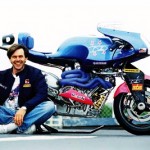
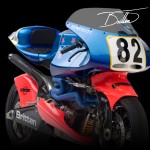
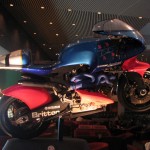
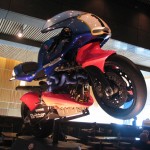
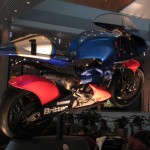
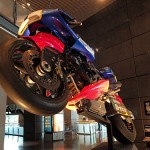
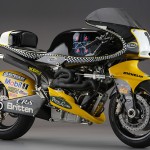
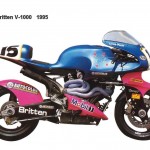
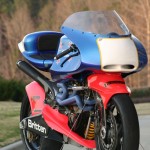
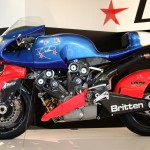
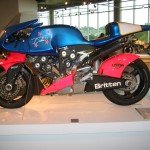
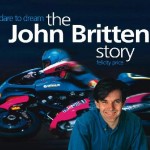
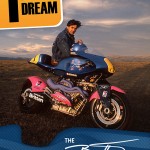
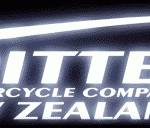

You must be logged in to post a comment.